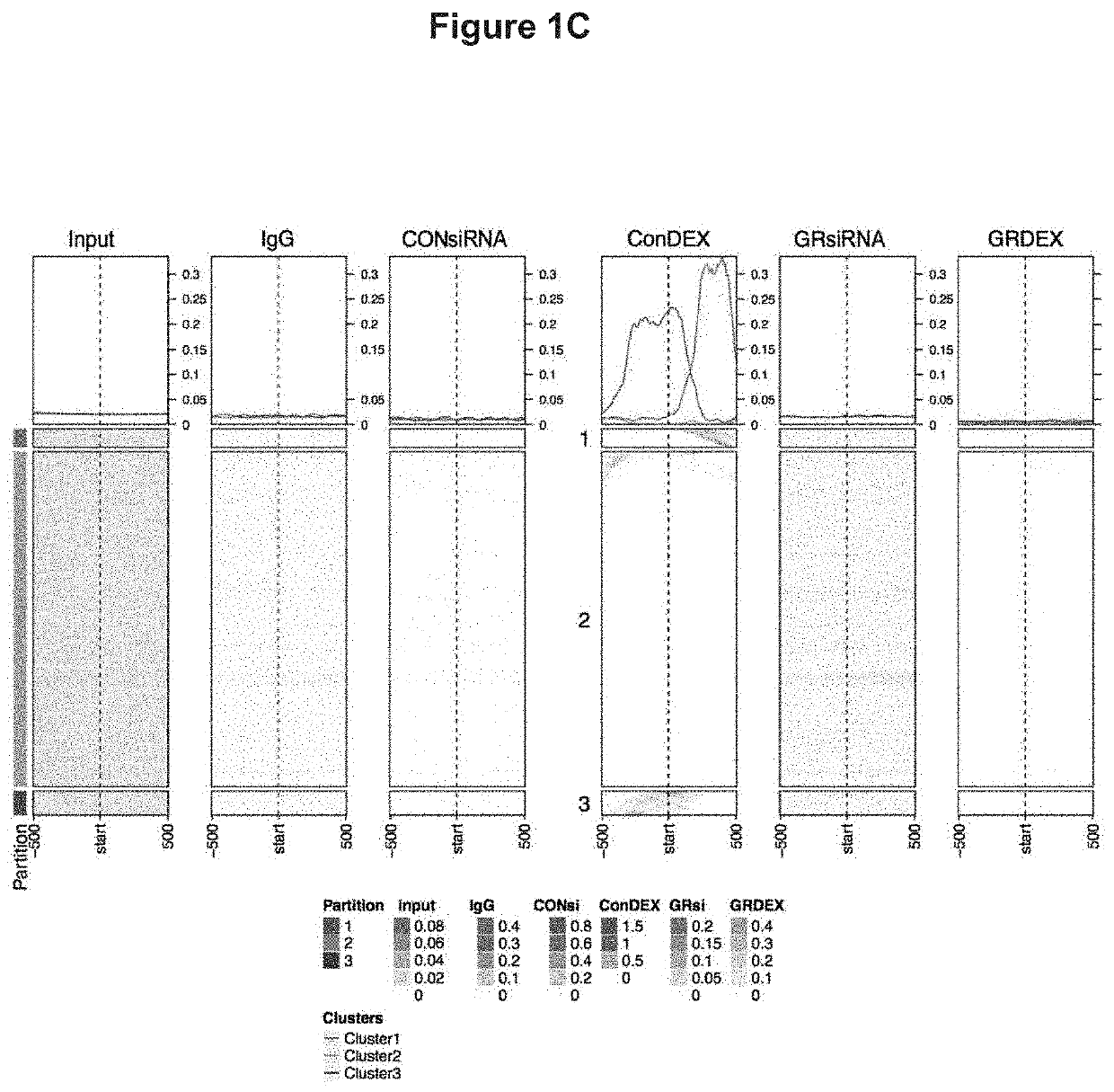Small molecule wnt inhibitor as treatment for dyslipidemia
a small molecule, dyslipidemia technology, applied in the field of compositions and methods for treating cardiovascular diseases and dyslipidemia, can solve the problems of ineffectiveness, lack of advancement, inability to tolerate vascular inflammatory disorders, etc., and achieve the effect of reducing the size of atherosclerosis deposition
- Summary
- Abstract
- Description
- Claims
- Application Information
AI Technical Summary
Benefits of technology
Problems solved by technology
Method used
Image
Examples
example 1
de GR DNA Binding in Endothelial Cells
[0154]To begin to understand the mechanisms by which GR regulates endothelial cell functions, ChIP-seq for GR was performed in primary mouse lung endothelial cells (MLECs) using a commercially available, ChIP-quality GR antibody. Six conditions were submitted for GR ChIP-seq analysis as follows: 1. control siRNA treated cells, 2. GR siRNA treated cells, 3. control siRNA treated with dexamethasone (DEX) 100 nM for 1 hour, 4. GR siRNA treated with DEX 100 nM for 1 hour, 5. IgG control, and 6. whole cell input. The duration of DEX treatment was replicated from a previous ChIP study (10), and knockdown of GR using this siRNA is greater than 80% (6). The control siRNA DEX-treated sample was treated as the ‘control’ sample, reflecting agonist activation of GR. Control siRNA samples were 2.63% enriched in GR elements, which is within the expected range of 1-7% for ChIP experiments (11); after treatment with GR siRNA, enrichment was reduced to 0.02% con...
example 2
ization of Gene Expression Changes by RNA-Seq
[0160]To further understand if, and how, the GR binding patterns discovered by ChIP-seq influenced gene expression, RNA-seq was performed using the same experimental groups as for the ChIP-seq analysis in MLECs except cells were treated with DEX for 18 hours to allow adequate time for transcriptional responses. As a result of the fact that 4 groups were being compared (control siRNA, control siRNA+DEX, GR siRNA and GR siRNA+DEX), there were over 143,000 independent fold-change calculations. These data were further restricted to those comparisons that had both a significant p value and a significant q value resulting in a more manageable list of 902 comparisons. From this group, 231 genes were DEX-responsive and 203 genes were differentially regulated by GR. Of the genes regulated by GR, 111 genes were down regulated in the absence of GR (i.e. induced by GR at baseline) (Table 7), and 92 genes were up regulated in the absence of GR (i.e. r...
example 3
n of GR ChIP-Seq in Endothelial Cells to GR ChIP-Seq in A549 Cancer Cells
[0161]To investigate which pathways were most enriched in the dataset Gene Ontology was used to analyze the top 1,000 peaks from the data and those available in ENCODE from a GR ChIP-seq experiment performed in A549 cells (10). FIG. 7 represents the pie charts from both data sets showing proportionally similar enrichment in 4 main pathways of interest: 1. Wnt signaling, 2. Inflammation by chemokine / cytokine, 3. Cadherin signaling, and 4. Angiogenesis, suggesting a similar pattern of GR responsive genes in these two cell types.
PUM
| Property | Measurement | Unit |
|---|---|---|
| Volume | aaaaa | aaaaa |
| Volume | aaaaa | aaaaa |
| Volume | aaaaa | aaaaa |
Abstract
Description
Claims
Application Information
 Login to View More
Login to View More - R&D
- Intellectual Property
- Life Sciences
- Materials
- Tech Scout
- Unparalleled Data Quality
- Higher Quality Content
- 60% Fewer Hallucinations
Browse by: Latest US Patents, China's latest patents, Technical Efficacy Thesaurus, Application Domain, Technology Topic, Popular Technical Reports.
© 2025 PatSnap. All rights reserved.Legal|Privacy policy|Modern Slavery Act Transparency Statement|Sitemap|About US| Contact US: help@patsnap.com



